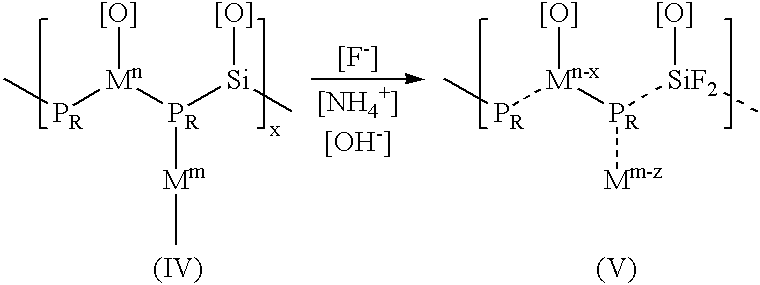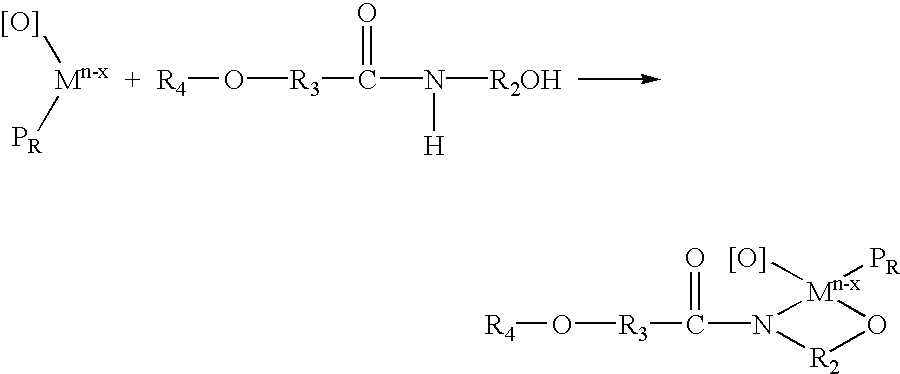Resist removing composition and resist removing method using the same
a technology of resist removal and composition, applied in the direction of inorganic non-surface active detergent compositions, cleaning using liquids, instruments, etc., can solve the problems of deformation of the profile of the interconnection layer pattern, inability to completely remove etching residues, and complicated manufacturing process
- Summary
- Abstract
- Description
- Claims
- Application Information
AI Technical Summary
Benefits of technology
Problems solved by technology
Method used
Image
Examples
example 2
Preparation of Resist Removing Composition and Evaluation of Same to Remove the Resist
Resist removing compositions were prepared in a composition ratio shown in Table 3. The samples to be treated with the above-described resist removing composition were prepared in the following manner. First, BoroPhosphoSilicate Glass (BPSG) layers were formed to a thickness of 5000 .ANG. on a plurality of substrates, respectively. Then, a titanium layer and a titanium nitride layer were formed to a thickness of 900 .ANG., respectively, and annealed. Then, a tungsten layer was deposited to a thickness of 2000 .ANG.. Next, a silicon oxynitride (SiON) layer as an anti-reflective layer was formed on the tungsten layer. Then, a photoresist layer was coated on the SiON layer and then photolithography was performed to form a photoresist pattern defining a tungsten interconnection. The photoresist pattern was baked and then the silicon oxynitride layer, the tungsten layer, the titanium nitride layer and t...
example 3
Evaluation of Appropriate Processing Time
To verify appropriate processing time, the composition corresponding to item number 11 shown in Table 3 was used, and the resist was removed at different processing times as listed in Table 4. The other processing conditions were the same as those in Example 2. The removal state of the resist, polymer and organometallic polymer was observed using SEM.
From the result shown in Table 4, it was observed that the most appropriate processing time for removing the resist includes times from ten to thirty minutes.
example 4
Evaluation of Appropriate Processing Temperature
To verify appropriate processing temperature, the composition corresponding to number 11 shown in Table 3 was used, and the resist was removed at different processing times as listed in Table 5. The other processing conditions were the same as those in Example 3. The removal state of the resist, polymer and organometallic polymer was observed using SEM.
The symbols in Table 5 are the same as those in Table 4.
From the result shown in Table 5, it was observed that the resist removal occurred rapidly in the lower temperature range from about 45.degree. C. to about 70.degree. C.
PUM
| Property | Measurement | Unit |
|---|---|---|
| Percent by mass | aaaaa | aaaaa |
| Percent by mass | aaaaa | aaaaa |
| Percent by mass | aaaaa | aaaaa |
Abstract
Description
Claims
Application Information
 Login to View More
Login to View More - R&D
- Intellectual Property
- Life Sciences
- Materials
- Tech Scout
- Unparalleled Data Quality
- Higher Quality Content
- 60% Fewer Hallucinations
Browse by: Latest US Patents, China's latest patents, Technical Efficacy Thesaurus, Application Domain, Technology Topic, Popular Technical Reports.
© 2025 PatSnap. All rights reserved.Legal|Privacy policy|Modern Slavery Act Transparency Statement|Sitemap|About US| Contact US: help@patsnap.com



